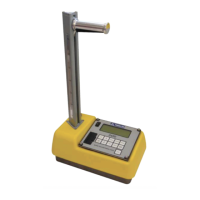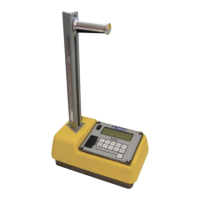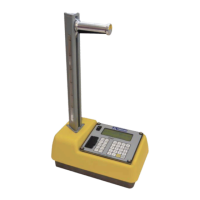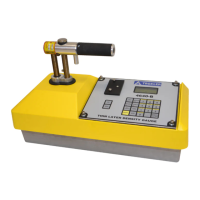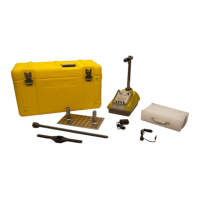Appendix A–2
T
T
r
r
o
o
u
u
b
b
l
l
e
e
s
s
h
h
o
o
o
o
t
t
i
i
n
n
g
g
Gauge Fails Standard Counts
Ensure that the source rod opening on the gauge bottom is
completely closed or covered by the tungsten sliding block.
If any opening is visible, the sliding block should be cleaned
by the Radiation Safety Officer as described in Appendix D. If
the sliding block still does not close completely, contact the
nearest Troxler Service Center.
Ensure that the guidelines for performing the standard
count listed on page 4–16 are followed.
Perform the standard count again. If it still fails, contact your
nearest Troxler service center or representative.
No Density Readings
The most likely reason for no density readings is an electronic
problem, such as a failure of the detector preamplifier.
CAUTION
Also, the gauge may have gotten wet. The Model 3440
and 3440 gauges are not waterproof and should not be
used in the rain. If the gauge gets wet make sure it is
completely dry before sealing it in the case for storage.
If you suspect that moisture may be inside the gauge
open the keypad panel and run a fan or hairdryer (on
low) in the gauge for 15 minutes to an hour in a clean
environment. .
As a precaution, ensure that the tip of the source rod is intact
and undamaged. Use a radiation survey meter to check the
radiation levels at the surface of the gauge base where the
source rod exits (without extending the source rod). A
maximum reading of 10-20 mrem/hr is normal, and indicates
the source is present. If the maximum reading is less than 1
mrem/hr or if a survey meter is not available, perform a visual
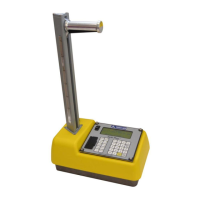
